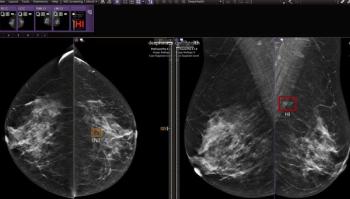
When Radiologists Discuss Imaging-Based Screening, the Public Listens
Radiologists can help members of the public better understand cancer screening imaging exams by providing public educational talks or presentations.
Radiologists who speak directly to public audiences about imaging-based cancer screening examinations can help promote audience satisfaction and add value to the public's understanding of the role of radiology and radiologists, according to an online article in the
Subspecialty radiologists from New York University Langone Medical Center reported on their experiences with radiologist-led direct public education about imaging-based cancer screening examinations. They were interested in the level of satisfaction and the educational impact reported by session participants.
The radiologists gave a total of 144 one-hour educational sessions (80 sessions about breast cancer, 40 about prostate cancer and 24 about lung cancer) to small lay public audiences (median size, 12 participants), comprising a total of 119 participants. Following each talk, the audience members were asked to complete a survey that asked about their level of satisfaction and if they felt that the sessions helped them better understand the diseases and relevant screening tests.
Results from the surveys showed that these talks were helpful to the respondents.
• 95.4 percent agreed or strongly agreed that the sessions increased their understanding
• 88.1 percent gained information not obtained from clinic visits
• 92.6 percent reported that seeing radiology images helped their understanding
• 85.8 percent felt more involved in their own care
• 87.4 percent felt more prepared to undergo screening tests
• 93.3 percent were satisfied with the sessions' format
• 96.2 percent were satisfied with the sessions’ content
• 88.3 percent reported that their main questions were answered
• 88.5 percent said they would be interested in similar future radiologist-led sessions
• 93.9 percent indicated that they would recommend the sessions to friends
According to the respondents, the provided information (43.1 percent) and images (34.7 percent) were the most helpful aspects of the sessions.
“Radiologist-led direct public education sessions about imaging-based cancer screening examinations yield high levels of audience satisfaction and add value to the public's understanding of the role of radiology and radiologists,” the authors wrote. “Our experience may provide an encouraging model for other radiology practices in pursuing similar endeavors.”
Newsletter
Stay at the forefront of radiology with the Diagnostic Imaging newsletter, delivering the latest news, clinical insights, and imaging advancements for today’s radiologists.


























